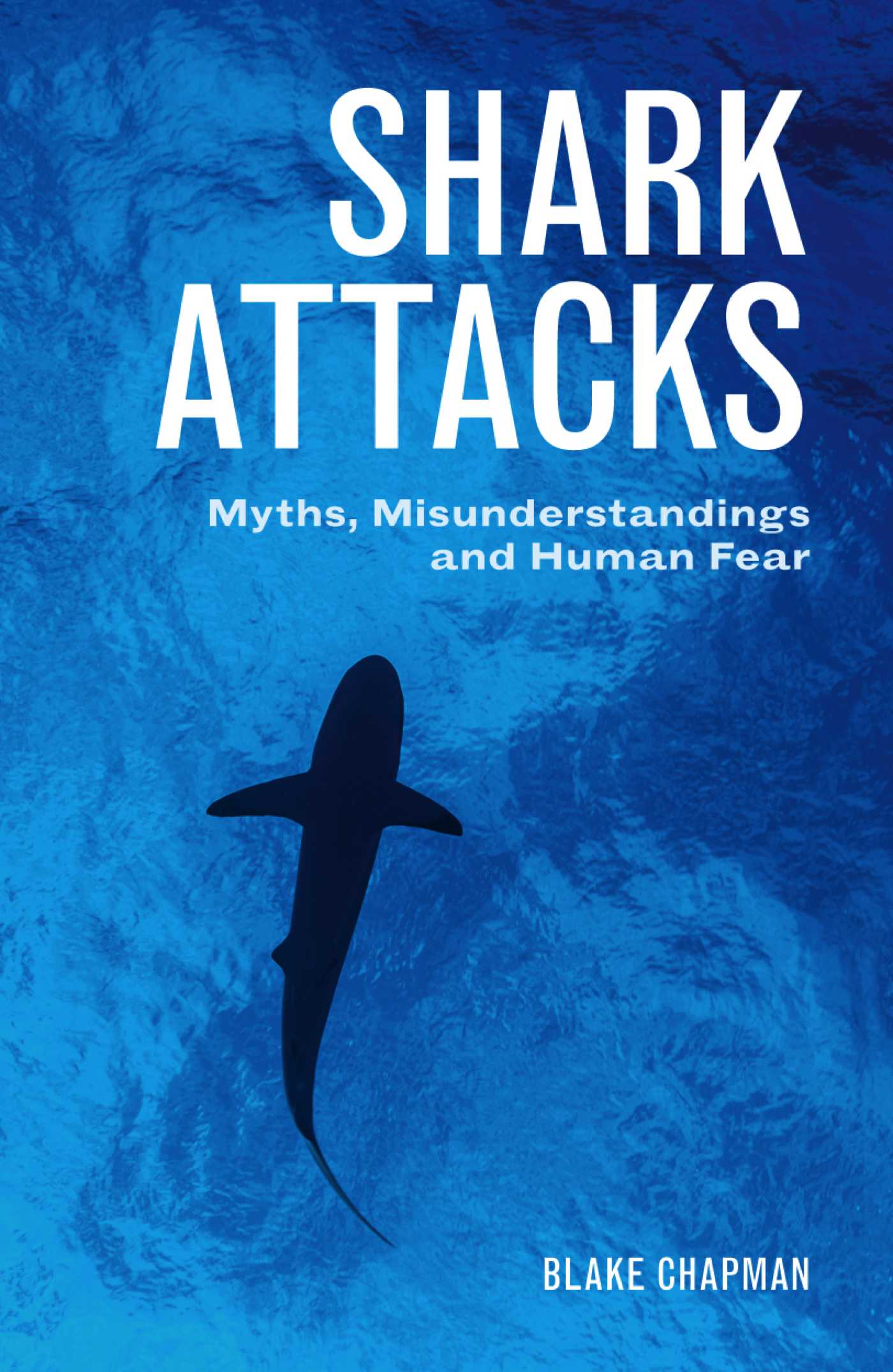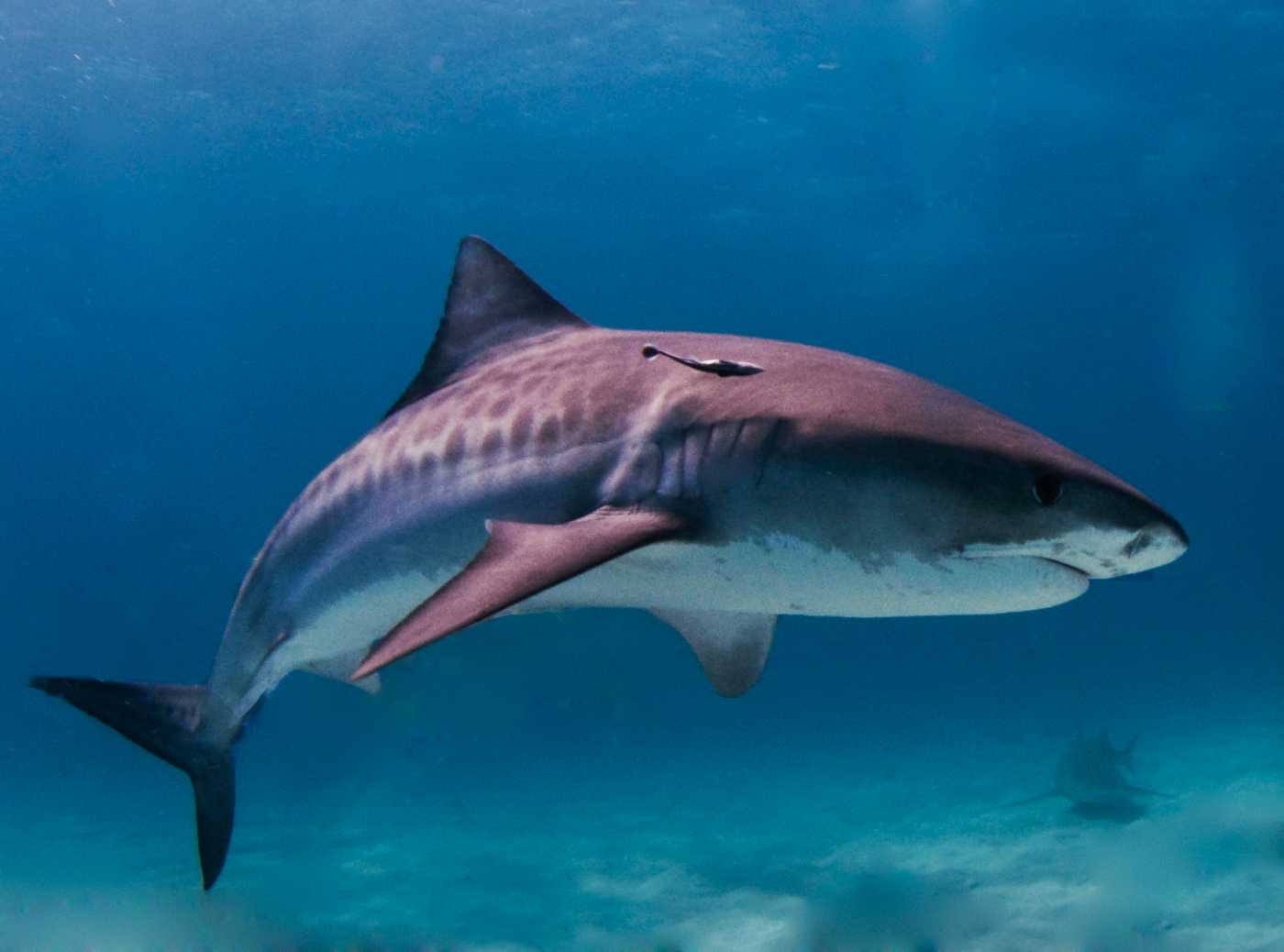I’ll never forget the summer of 2014. The scent of salt in the air, the sun slowly setting over the bay, and around me the steady burbling of seawater flowing into the tanks. Circling inside the largest tank were 10 timid gummy sharks (Mustelus antarcticus), who would often recognise my hand in the water not as food, but a foreign object (or animal!) that was best avoided. I often handled gummies so I could take regular blood samples to monitor their health, but one day, in the frustration of not being able to catch a specific individual, I hastily mishandled the shark and was bitten.
Being bitten by a gummy was the first and, fortunately, the only tangible appreciation I have had of the power behind the bite of a shark, even from one measuring just 50cm long. The bite was very minor; just a bruise on my thumb and the feeling was as though I’d jammed my finger in a door (as the name suggests, they have gum-like plates rather than sharp teeth). Funnily enough, my reaction to being bitten was similar to Shark Attacks author, Blake Chapman, who describes being bitten by a mishandled, small black-tip reef shark as “…a few minor scratches on my fingernail… For a novice shark enthusiast… this was sufficient to let me tick ‘being bitten by a shark’ off my bucket list. It also led to my interest in shark jaws and teeth.” Both of us experienced very minor encounters, yet the power of these encounters was enough to ignite our passion to learn more about sharks.

Human-shark interactions are complex, ranging from husbandry and tourists in aquariums, to the traumatic and sometimes fatal encounters whilst diving or surfing. Shark Attacks focuses on the latter end of the spectrum, delivering a comprehensive and balanced overview backed by the latest scientific research. Chapman explores negative shark interactions (hereafter referred to as ‘shark bites’) by providing the reader with the fundamentals such as the basic biology and behaviour of sharks, the statistics and likely causes of shark bites, and both personal and legislative mitigation measures. But what is most insightful is her illumination of the role human psychology has in the context of both our general perception of shark bites, and that of the mental trauma they can cause.
Our general psychological make-up, in particular the fear and awe sharks tend to inspire, has an evolutionary purpose – to keep us safe and alive. However, if we’re not careful, our psychology can drive us to make irrational judgements that do not necessarily reduce the risk of shark bites nor reassure survivors, despite their well-intended means. This is where Chapman truly succeeds in her book, flipping the whole issue on its head and really probing us humans, rather than the shark per se.
Employing the cognitive theory of risk perception, Chapman succinctly explains why vivid imagery and emotion often trumps logic, and how the actual risk of a shark bite is far smaller than the perceived risk – it’s why stats like ‘1000 times more likely to be struck by lightning’ don’t really stop you walking in a thunderstorm to your car as much as the thought of a shark would stop you dipping your toe in the water.
How we use language also has a big impact in how we perceive sharks. By now you’re probably wondering why I haven’t used the word ‘attack.’ It’s intentional and all about the framing. ‘Attack’ conjures images of violence and life-threatening danger, whereas ‘bite’, although just as potentially dangerous as ‘attack’, is far less emotive. Furthermore, ‘attack’ may not accurately report the shark’s real behaviour and often, sharks will bite as a means of curious exploration. My only (very) minor criticism is that Chapman has succumbed and still used the term ‘attack’, but in her defence she acknowledges the power of terminology – in depth, may I add – and soundly justifies her use of ‘attack’ as ‘… a conscious decision not taken lightly… to connect with a broad audience… and [this] best positions me to do this.’
To my surprise, and to Chapman’s as well, is the extent to which shark bite victims and their family and friends experience cyberbullying. Whether through comments on digital media posts or in open social media forums, Chapman relates it to the simple fact that “…a lot of public anger can come out in relation to [shark bites] and the association between the victim and the anger can be really confronting for people who are already dealing with the mental and physical burdens of trauma.” However, despite the negative comments, in one of the many anecdotes littered throughout the book, social media is also credited for providing a platform through which private groups can form, share their shark bite experiences, and help alleviate their respective traumas. One particular anecdote from Dave Pearson, founder of online support groups Beyond the Bite and Bite Club, is a must-read, providing a candid insight into the transformation of the human mind, heart and soul following a shark bite.
The book is punctuated with these powerful anecdotes from survivors, victims’ families and friends, and medical practitioners who all demonstrate how an event can shape lives indefinitely. The anecdotes presented are well-balanced in their views, with some describing the event as giving them a “…whole new appreciation of life…”, whereas others who have witnessed a fatal event say “…it leaves a major impression. Humans before sharks, is my belief.” However, a common thread that runs through most of these stories is the acknowledgement that sharks deserve respect and are in need of our protection. It is these anecdotes that, I believe, complement the science presented and lend significant weight to shark conservation, more so than facts alone ever could.
“None of my family, friends or I have any hatred or hard feelings towards sharks… the ocean gives us so much joy, happiness and great memories, and sharks really just make the ocean more interesting.” – Mike Coots, survivor of a Tiger Shark (Galeocerdo cuvier) bite.
Shark Attacks is easy to read, comprehensive, and serves as a great primer for those who wish to understand sharks, our relationship with them, and how shark bites affect the lives of those beyond the bite.
Purchase your copy of Shark Attacks from CSIRO Publishing.
Banner image courtesy of Albert Kok (Own work) [GFDL (http://www.gnu.org/copyleft/fdl.html) or CC BY-SA 3.0 (https://creativecommons.org/licenses/by-sa/3.0)], via Wikimedia Commons.


Leave a Reply